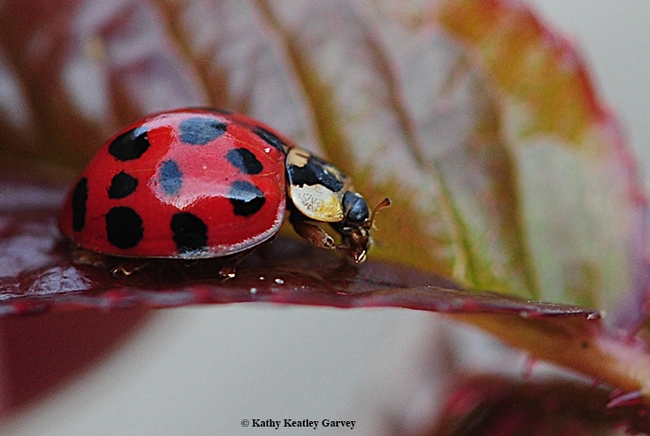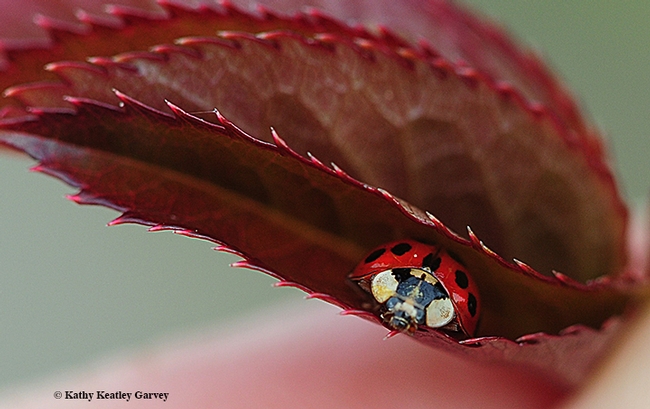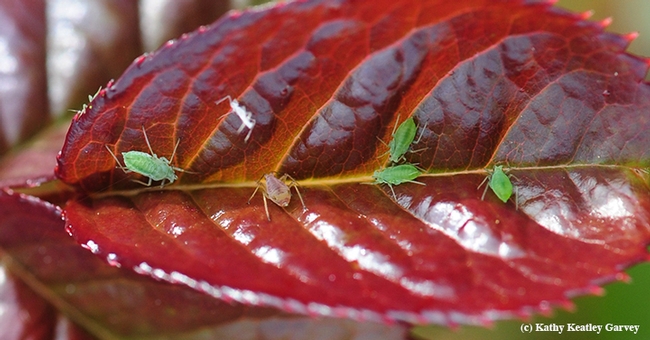They're back!
Have you checked your rose bushes lately? Along with the lush new growth, you'll probably notice a new crop of aphids. And if you look closely, probably lady beetles (aka ladybugs).
The UC Integrated Pest Management Program (UC IPM) defines aphids as "small, soft-bodied insects with long slender mouthparts that they use to pierce stems, leaves, and other tender plant parts and suck out fluids." Basically, they're pear-shaped insects with long legs and long antennae and may be green, yellow, brown, red or black "depending on the species and the plants they feed on," according to UC IPM. "Almost every plant has one or more aphid species that occasionally feed on it. Many aphid species are difficult to distinguish from one another; however, management of most aphid species is similar."
"A few species appear waxy or woolly due to the secretion of a waxy white or gray substance over their body surface. Most species have a pair of tubelike structures called cornicles projecting backward out of the hind end of their body. The presence of cornicles distinguishes aphids from all other insects."
UC IPM also says that most aphids don't move rapidly when disturbed. That's the truth! Sometimes they're just a 16th of an inch away from a lady beetle that's gobbling up their siblings.
The lady beetles in our garden today were primarily the multicolored Asian lady beetles (Harmonia axyridis), also known as Harlequin lady beetles. They're native to China, Russia, Korea and Japan. In colder parts of the world, they're considered a nuisance when they overwinter in large congregations in walls, windows or attic. They leave unpleasant odors and stains.
Friend or foe? They're more of a friend, at least here in sunny California.
Attached Images:

Dorsal view of a multicolored Asian lady beetle on a rose bush. (Photo by Kathy Keatley Garvey)

A lady beetle gobbling an aphid. (Photo by Kathy Keatley Garvey)

Peek-a-boo! A lady beetle peers between a folded rose leaf. (Photo by Kathy Keatley Garvey)

Lady beetles, where are you? Here's dinner! Aphids use their long slender mouthparts to pierce plant parts and suck the juices. (Photo by Kathy Keatley Garvey)